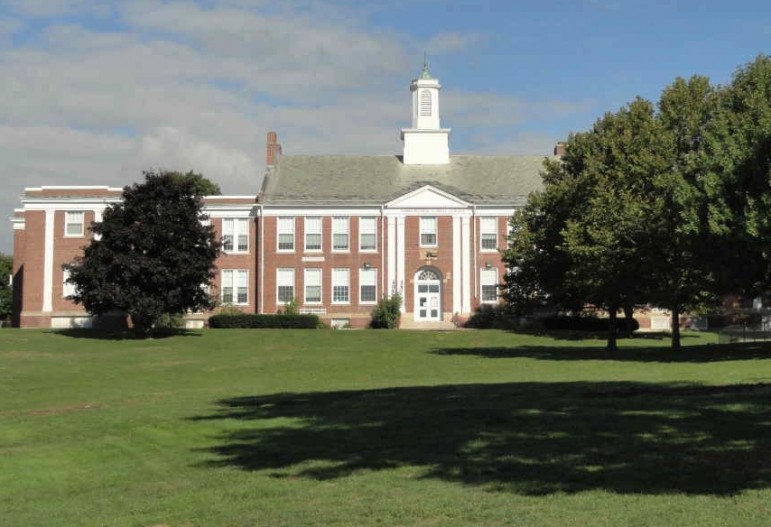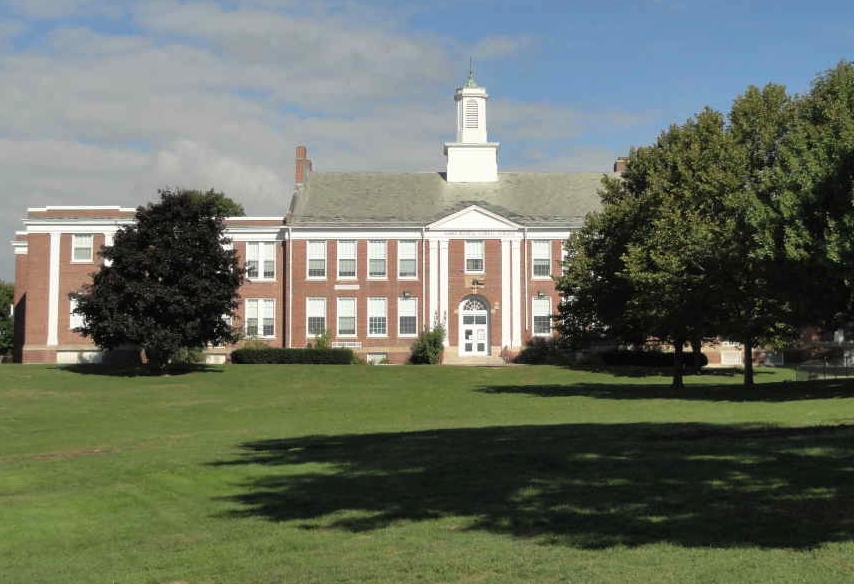
When the school year begins, Watertown Public School students will start off learning from home, but officials have designed a plan to transition back to in-person learning without drastic changes to students’ schedules.
Thursday night, the School Committee approved the “Bridge to Hybrid” plan proposed by Superintendent Dede Galdston. Under the plan students will start in remote learning, but Galdston said it will be more structured, and teacher focused than the spring.
Meanwhile, the schools will be prepared to welcome back students while complying with COVID-19 heath and safety guidelines. The requirements, particularly the 6-foot distancing rule, will limit the number of students that can be in a classroom. Therefore, when students return, they will do so in two different cohorts — attending on alternating days.
“When we begin in a hybrid model, students will be in-person two days a week, and will be remote three days a week based on their cohorts,” Galdston said in a memo to the School Committee.
Parents can also choose to have their students attend school virtually, even when a hybrid option is available. Students in this program will remain until at least Feb. 8, at which time families can reassess their options for their children.
Elementary school students would be the first to return to school, in late October at the earliest, followed a month later by the middle and high school. These returns would be dependent on the level of COVID-19 in the area being low enough to return safely, Galdston said.
School officials will hold multiple forums about the reopening of schools. See the schedule with links to the Zoom meeting below.
What Days Will Look Like
The schedules for all three levels will be set up to run the same remotely as it will when students transition into hybrid.
The following schedules will be used when the hybrid model is used:
Elementary
In the elementary schools, students will start the day together with a morning meeting, regardless of if they are on an in-person or a remote day.
Then, the in-person students (Cohort A) will have lessons with teachers in math, reading, writing and other subjects, along with a recess period. The students who are learning remotely (Cohort B) will have a live world language lesson, and two live specials (art, music, PE, etc.). They will also have time to work with a teacher online to get some extra help.
Both groups will end the morning with a joint closing circle.
After lunch, all students will be remote, and will do asynchronous (recorded lesson or pre-assigned activities) with lessons in social studies, science and reading time.
The groups will flip the next day, with Cohort A learning remotely and the Cohort B attending in-person.
Middle School
Watertown Middle School will also have two cohorts, both of which will start the day with a joint community meeting.
Students attending in-person will have four periods of 30 minutes each with different subjects: math, English, social studies and science. They will also have time to get help from teachers and work in small groups.
Those who are on a remote day would have a live lessons in world language, a special and reading, as well as support time.
After lunch, both groups would be working remotely on asynchronous lessons. This would include math, English, history, science, world language and reading. The day would end with time for live remote support with teachers.
High School
In the mornings, students will be attending all seven classes over the course of two days, with four classes Mondays, and three on Tuesdays plus an advisory period. The schedule would repeat on Wednesdays and Thursdays, but with time for ensemble or asynchronous lessons on the second day.
In the afternoon, students would have asynchronous lessons, with math, history and world language on Mondays and Wednesdays; and on Tuesdays and Thursdays it would be English, science and electives.
On Fridays, students would have office hours with teachers, as well as time for group projects, ensembles and seminar classes.
Phases of Bridge to Hybrid
The first day of school will be on Sept. 22, but there will be plenty of activities before then.
Galdston discussed the five phase plan for moving the Watertown schools into a full return to the classroom. Phase 1 (Sept. 1-16) would be for professional training, planning and setup of classrooms.
Then from Sept. 17-21, in Phase 2, there will be community building activities with students attending small group or individual meetings with teachers. These will be either virtual or outdoors in-person. Students will receive training, and there will be distribution of technology, masks and supplies.
School will begin Sept. 22 with students attending remotely. The district will look to move to a hybrid model, where students attend school but will be split into two groups which will go to school on alternating days. The plan calls for the elementary school students to return first (the earliest would be Oct. 27), then the middle and high school would return (Nov. 30 at the soonest).
The decision of whether students can return to school will depend on the number of COVID-19 cases in Massachusetts, as well as looking at the Middlesex County and local rates, Galdston said.
Galdston provided the following information on the other phases:
Phase 3: Sept. 22 to Oct. 22
- First Day of School for all students: Sept. 22. Watertown Bridge to School and Virtual School begin remotely following the same schedules established for the hybrid model.
- While remote, all students will be placed into two cohorts “A” or “B”
- At the elementary level, each Cohort receives core academic instruction two days a week in their cohort, with specials and other learning opportunities on the two.
- Elementary and Middle School will begin the week with both cohorts together on Mondays
- High School will follow their seven period schedule two days a week
Phase 4: Oct. 22 until Hybrid is Possible
- Oct. 22 – Benchmark 1: First Assessment for possible Elementary Return
- Available data and reopening metrics are reviewed to determine if it is safe and feasible to return to in-person learning in a hybrid model in our elementary schools or primary grades. If so, the first day back would be Tuesday, Oct. 27.
Nov. 25 – Benchmark 2: First Assessment for possible MS/HS Return (or Second Assessment for Elementary Return)
- Available data and reopening metrics are reviewed to determine if it is safe and feasible to return to in-person learning in a hybrid model for middle school and high school students. If so, the first day back would be Monday, Nov. 30.
- Benchmarks correspond to academic quarters and semesters
Phase 5 would return to full in-person learning. Galdston said that will happen when it is safe to do so — when a vaccine or COVID-19 treatment is widely available.
Safety Measures
School officials are preparing schools for students to return to school during COVID-19. Students will be at least five to six feet apart, and staff and students will be given personal protection equipment (PPE). Staff can get COVID-19 tests, and special equipment, such as air purifiers, have been purchased for spaces that do not have a window.
Here are details from the Superintendent’s memo:
School/Classroom Setup
- No more than 12 people (students and adults) in a typical classroom (depends on the size of the room)
- Desks & tables spaced 6 feet apart
- When possible, sinks will be available in classrooms for handwashing, especially with the specialized programs, and additional sanitizer will be available in all rooms
- Plexiglass placed in high traffic areas
- Quarantine rooms in every building
- Entrance and exits are controlled, hallways and staircases will have one way directions
Air Quality
- WPS has contracted with Ai3 to review our HVAC systems (Buildings and Grounds Subcommittee will meet to review any recommendations that are made)
- Air Purifiers with HEPA filters have been purchased for nursing offices, isolation rooms, and any rooms without adequate ventilation (i.e. rooms without windows)
- Windows have been checked in all rooms and work orders have been generated with windows that don’t open
Cleaning
- Detailed Custodial Response Plan developed, in line with CDC guidelines
- Custodial staff will be scheduled to maximize time in the buildings
- Purchased additional electrostatic sprayers to disinfect buildings
- Cleaning & disinfectant supplies have been purchased for every classroom and every building
Masks, Face Shields, Gloves and PPE
To date, the following items have been ordered (and more): 18,700 disposable masks, 800 Student Fabric Masks, 1000 Staff Fabric Masks, 6600 Gowns, 650 Fisherman’s hats, 312 Goggles, 3000 N95 Masks, Sneeze Guards, 600+ Gallons Hand Sanitizer, Sanitizing Wipes, Student Desks for K and 1 (to replace tables), 600 boxes of gloves
Testing
- Working with the Broad Institute, our goal is to provide testing for all staff before school starts
Forums
Superintendent’s Forum: The WPS Fall Reopening Plan
The Superintendent, the Central Administration Team, and principals will provide an overview of the WPS Fall Reopening Plan
August 11, 6:00-7:00 pm Zoom Link
School Committee meeting
August 24, 7:00 pm Zoom Link
Reopening Community Forums
The Superintendent, the Central Administration Team, and various principals will provide weekly updates to the Community regarding reopening planning. Participants can submit questions and provide feedback during the forums.
August 18, 6:00 pm – 7:00 pm Zoom Link
August 25, 3:00 pm – 4:00 pm Zoom Link
September 1, 6:00 pm- 7:00 pm Zoom Link
September 8, 6:00 pm – 7:00 pm Zoom Link

It would be great if a financial literacy course could be done this year either in person or on line. Many young people don’t know how to create a budget to live by, write a check, learn how to save for the future, how to participate in stocks and bonds, etc. Many other states make this mandatory for students to graduate. MA is way behind on this. I don’t know if our Watertown schools offer anything, but I think it’s especially important after experiencing the effects of covid 19. People have to learn to have a safety fund to support their needs when they lose a job, have a serious illness, have to take time off for family emergencies, have unexpected home or car repairs, or are in a situation like this pandemic that cuts their income. People need to learn about personal responsibility and finance is a big part of it.